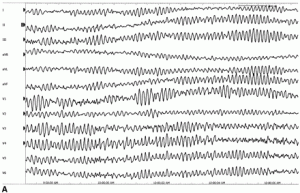How To Kill Your Imaginary Friends: Flatlines
 I’m happy to announce a new feature on the SFWA blog, “How to Kill Your Imaginary Friends: A writer’s guide to diseases and injuries, and how to use them effectively in fiction” written by the pseudonymous Dr. Grasshopper. Dr. Grasshopper is finishing medical school student and is a science fiction and fantasy author.
I’m happy to announce a new feature on the SFWA blog, “How to Kill Your Imaginary Friends: A writer’s guide to diseases and injuries, and how to use them effectively in fiction” written by the pseudonymous Dr. Grasshopper. Dr. Grasshopper is finishing medical school student and is a science fiction and fantasy author.
We start this week with:
If you shock a flatline, I swear I will come to your home and beat you with a wet chicken.
by Dr. Grasshopper
Beep…… Beep…… Beep…… Beep…… Beep…… Beeeeeeeeeeeeeeeeeeeeeeeeeeeee..………………Clear!………………… KA-CHUNK!!!!!!!…… Beep…… Beep…… Beep…… Beep…… Beep…………………
You know what this sounds like. You know exactly what this sounds like. You’ve heard it on practically every hospital TV show, every movie in which someone is rescued near death in a spaceship with a sickbay…over, and over, and over.
And it’s WRONG!!!
I’d like to take some time and explain why, how to not be THAT WRITER, and what you can do instead.
When a person’s heart stops in a hospital, it’s known as a code. Codes are nuts. Doctors really do run through the halls of the hospital, and it turns into an absolute madhouse. There’s a lot to do during a code.
There’s actually too much to talk about. So let’s focus on the heart monitor, for now. One of the first things that happens during a code is that you place monitors on the patient so you can keep track of what’s going on inside their body.
The beeps you hear on a heart monitor are an audible notation of the electrical activity that is going on in the heart. The electrical activity of the heart is the signal that tells the heart muscle to contract and pump the blood to where the blood needs to go.
That long, extended beep is a flatline. It means that there is no electrical activity going on in the heart that the heart monitor can pick up. That means the heart is not beating correctly, since it’s not getting the proper electrical signal.
So what does shocking do for a person who’s having heart problems?
Contrary to popular usage, the heart doesn’t work like a car, where you can just jump a dead battery. The purpose of a shock to the heart is to DISRUPT an electrical pattern that does not result in an adequate heartbeat. The shock stuns the heart, hopefully so it will reset itself into a normal rhythm.
This is why you don’t shock a flatline, no matter how easily-recognized it might be to an audience of uneducated viewers. The flatline means that there’s no electrical pattern to disrupt, organized OR disorganized. The heart is pretty well stunned as it is, and re-stunning it won’t help you a bit.
According to usual medical practice, here are the shockable heart patterns, and what they look like on a heart monitor:
Ventricular Fibrillation: This is when the ventricles of the heart are fluttering, which doesn’t result in a sufficient squeeze to get the blood where it needs to go. It looks like this:
Pulseless Ventricular Tachycardia: Basically, a heartbeat where the ventricles squeeze so fast that the pumping chambers of the heart don’t have time to fill…and the blood doesn’t get where it needs to go. It looks like this:
So, what DO you do with a flatline? (Also known as “asystole”)
Well, it’s a little less dramatic than what the TV would have you believe. First, you make sure that the blood is still going where it needs to go. This is accomplished with chest compression, which is the technique of pushing on the chest in a way that squeezes the heart from the outside.
(By the way, chest compressions are EXHAUSTING. In a hospital setting, there are a bunch of people who volunteer during the code for chest compressions, and they rotate in and out every few minutes. You just can’t keep it up for more than a few minutes, even if you’re in fantastic condition.)
Beyond that, you push drugs into the patient’s circulation that act in ways that encourage the electrical activity of the heart to start up again. Meanwhile, you try to figure out what caused the heart to stop beating, and try to get that problem solved.
Here’s a list of usual causes of asystole: pulmonary embolism, tension pneumothorax, very low blood pressure, very low body temperature, cardiac tamponade, heart attack, acidosis, very high potassium, very low potassium, low oxygen, drugs (medications or illicit drug use), poisons.
So, if you really, really want a flatline on your monitor, the dramatic tension of the story shouldn’t be action-adventure oriented. Yeah, there are people running everywhere and doing everything during a code, but a flatline wouldn’t have anyone diving for the paddles. The tension from a flatline would come from the dialogue between the doctors, as they discuss what could be the cause of the patient’s asystole.
And there’s a time limit, which gives you the tension that comes from a ticking clock. If doctors can’t get the heart to restart in a reasonable amount of time, the patient will likely suffer so much brain damage that it’s more reasonable to stop efforts and let them go.
So, if you have a patient with a flatline: go for relatively quiet, dramatic tension. Have a doctor with a personal stake in saving this patient’s life, watching the clock tick as she desperately tries to figure out why the patient’s heart stopped. The family, standing by, waiting anxiously and praying. The nurses and students rotating through compressions, giving nervous glances to each other as the seconds and minutes pass. The pharmacists, at the ready with the next combination of drugs to try. It’s an atmosphere that’s so thick with real tension, you don’t need to add any electrical shocks to it.
But if you do want to dive for the paddles, and yell “CLEAR!” and have the patient twitch on the table…yes, that all does happen. But for the love of all that’s good and medically accurate, put one of the shockable rhythms on your monitor!
Sources:
http://www.acls.net/aclsalg.htm
http://content.onlinejacc.org/cgi/content-nw/full/43/10/1765/FIG1
http://www.12leads.com/asystole.htm
The contents of this site, such as text, graphics, images, and other material contained on the Site (“Content”) are for informational purposes only. The Content is not intended to be a substitute for professional medical advice, diagnosis, or treatment. Always seek the advice of your physician or other qualified health provider with any questions you may have regarding a medical condition. Never disregard professional medical advice or delay in seeking it because of something you have read on this Site!
If you think you may have a medical emergency, call your doctor or 911 immediately. This blog does not recommend or endorse any specific tests, physicians, products, procedures, opinions, or other information that may be mentioned on the Site. Reliance on any information provided by this blog, or other visitors to the Site is solely at your own risk.
The Site may contain health- or medical-related materials that are sexually explicit. If you find these materials offensive, you may not want to use our Site. The Site and the Content are provided on an “as is” basis.
If you do use this as if it were real medical information, I will come to your home and beat you with a wet chicken. Even if you don’t shock a flatline.
—
Reprinted with permission from “If you shock a flatline, I swear I will come to your home and beat you with a wet chicken” by Dr. Grasshopper.





